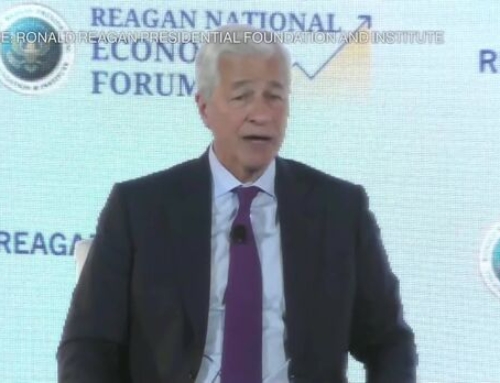The New “Permanent” $15 Million Estate & Gift Tax Exemption: What It Means for You
On July 4, 2025, President Trump signed the One Big Beautiful Bill Act (H.R. 1) into law. Among its provisions, Section 70106 fundamentally changes the landscape of estate planning: it increases the federal estate and gift tax exemption to $15 million per individual (or $30 million for married couples) and, crucially, removes the sunset clause that previously threatened a dramatic step-down starting January 1, 2026 (Frost Brown Todd).
Why This Change Matters
Under the 2017 Tax Cuts and Jobs Act (TCJA), the exemption doubled — rising to approximately $13.99 million in 2025 — but was scheduled to revert to around $7 million at the turn of the year. Now, thanks to Section 70106:
- The exemption will rise to $15 million for deaths and gifts occurring after December 31, 2025, with inflation adjustments beginning 2027, using 2025 as the base year (Bean Kinney & Korman).
- The “permanency” means any future rollback would require new legislation, eliminating the automatic sunset shock (Wealth Management).
- Jointly, spouses benefit from $30 million exemption, significantly shielding married couples from estate taxes (Bean Kinney & Korman).
How Primary Stakeholders Are Affected
- Estates Well Below $15 Million
For most individuals and couples whose estates fall under the $15 million ($30 million jointly) threshold, the need for aggressive estate tax planning diminishes—but basic estate planning remains essential:
- Wills, trusts, and power of attorney documents ensure that assets pass as intended.
- Planning still safeguards against costly probate delays, incapacity planning concerns, and state-level estate taxes, which often have much lower thresholds (The Wall Street Journal).
As one advisor aptly notes:
“The permanence is a big deal for our family businesses, so they can do more long‑term succession planning.” (The Wall Street Journal)
- Estates Near or Above the Exemption Threshold
For estates approaching or exceeding $15 million/$30 million, the higher exemption offers some relief—but does not eliminate the need for strategic planning:
- Assets above the exemption remain subject to the 40% estate tax (Bean Kinney & Korman, Kiplinger).
- Traditional vehicles — such as irrevocable life insurance trusts (ILITs), grantor retained annuity trusts (GRATs), spousal lifetime access trusts (SLATs), and family limited partnerships — remain vital tools to shift future appreciation out of the taxable estate .
- Portability continues; married couples can transfer unused exemption amounts between spouses (Frost Brown Todd).
While some pre-2026 gifting strategies seized the impending higher exemption, dynamics have shifted:
- Couples who used the full 2025 exemption ($13.99 million) can now make additional tax-free gifts thanks to the new $15 million base .
- But, with no looming deadline, planners are re-evaluating whether aggressive gifting still makes sense—especially given the loss of “step-up” in basis on gifted assets, which can carry income tax repercussions .
The Estate Planning Roadmap Going Forward
- Recalculate & Reassess
- Net-worth evaluations are critical. Those previously concerned about crossing $14 million now have a buffer—though exceeding $15 million still triggers exposure.
- Gifting history matters. Past taxable gifts reduce remaining exemption. A person who gifted $10 million already has only $5 million in future room—now $5 million out of $15 million .
- Adjust Gifting Strategies
- The urgency to reach $13.99 million before year-end is gone—but gifting can still be advantageous.
- For assets with modest appreciation, lifetime gifting may expose executors to greater income tax compared to waiting for a step-up in basis at death.
- Conversely, for high-appreciation assets, removing them now via trusts or gifts might still be beneficial, especially to reduce future estate tax exposure.
- Revise Trust Plans
- Existing SLATs or GRATs funded to capitalize on the higher exemption might have been built with timing assumptions. Now these should be reassessed:
- Can funding be slowed or resized?
- Does the existing trust structure still make sense given the shifted exemption ceiling?
- ILITs funded with life insurance provide liquidity at death—even with higher exemptions, a sudden drop in exemption could threaten plans that rely on liquidity at low asset values.
- State-Level Coordination
Nearly a dozen states impose their own estate or inheritance taxes—often with far lower exemption levels (e.g., Massachusetts $2 million, Washington $3 million with 35% top rate) .
- State-specific trusts (e.g., QDINKs in Washington) remain powerful tools.
- Review domicile strategies and comprehensive multistate planning.
- Monitor Political and Legislative Developments
While Section 70106 made the exemption “permanent,” this permanence is legally mutable:
“A future Congress and a future administration could enact new legislation that would repeal or reduce the increase.”
- The probability of rollback increases if control of Congress shifts.
- However, a cutback from $15 million to, say, $7 million after more than a decade of $15 million is likely to create public backlash—a form of political inertia that offers a degree of stability .
Estate Planning Analysis: What Stays, What Shifts
| Planning Area | Previous Strategy (Pre-2026) | New Strategy (Post-2025) |
| Aggressive gifting | Rush to use $13.99 m before 12/31/2025 | Slower, more thoughtful gifting; fewer deadlines |
| Trust funding | Complete funding to lock in exemption | Evaluate whether full funding remains necessary |
| Asset sales & basis | Gifting had income tax cost | Step-up basis now more attractive for modest gain |
| Insurance/liquidity | Still needed for estates near exemption | Remains important as safeguard |
| State estate tax | Always a concern | Still vital; federal fix doesn’t prevent state-level planning |
In Summary: Resetting the Estate Planning Horizon
- The new $15 million exemption offers certainty and breathing room, significantly reducing the urgency of immediate gift-giving.
- But for families with estates north of $15 million/$30 million, or those with state-level estate taxes, thoughtful, proactive planning remains essential.
- Pre-funded trusts should be reevaluated and possibly restructured.
- The removal of the sunset clause isn’t a guarantee; prudent clients should stay alert to political developments.
- Finally, comprehensive planning—including incapacity documents, guardianship, and charitable strategies—remains necessary for everyone, not just high-net-worth individuals.
Key Takeaways for Planners and Clients
- No more 2025 gifting race – but instead, a planned, strategic approach.
- $15 m exemption is not immunity – assets beyond that are still taxable.
- State estate taxes demand attention – they are unaffected by federal changes.
- Review existing trusts – SLATs, GRATs, ILITs may need adjustments.
- Stay politically aware – legislative reversals could come, though they are less probable.
This legislation fundamentally simplifies the estate tax timeline and removes annual tensions around repeal deadlines. But it does not eliminate the need for strategy—especially at higher asset levels and in multi-jurisdictional situations. Working with experienced estate planners and tax advisors to revisit and recalibrate plans in light of this new norm is now the prudent next step for high-net-worth individuals and couples.
Bottom line: If your estate is under $15 million individually ($30 million jointly), estate tax planning becomes simpler—but not optional. Above those thresholds, or where state taxes apply, intelligent, forward-thinking planning remains your strongest ally in preserving a legacy free from unnecessary taxes and complications.
To get Estate Planning assistance from a licensed attorney in your state, just contact us at 1-888-814-0304 or email ford@activewealth.com. Ford Stokes and the licensed advisors with Active Wealth Management have partnered with an estate planning legal service that provides expert legal work from licensed attorneys in all 50 States.





